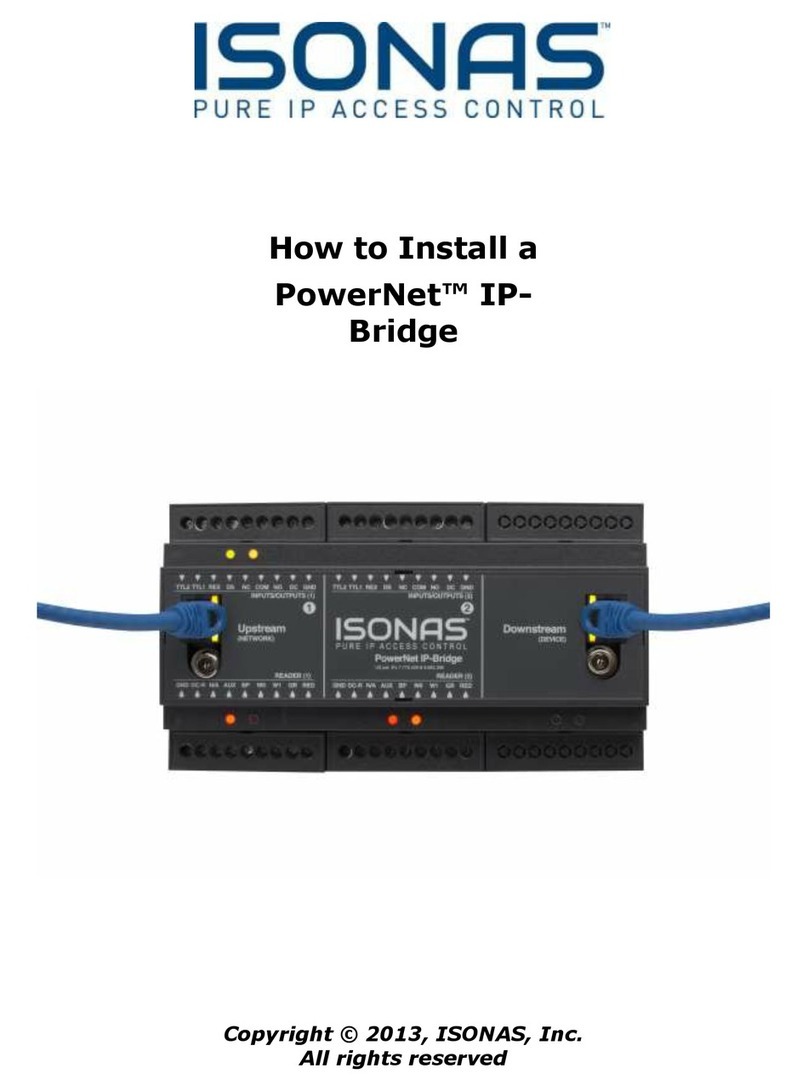
IPBridge Installation Guide (---Draft---) Page 2
Table of Contents
1: INTRODUCTION.................................................................................................................................... 4
1.1: BEFORE YOU BEGIN..................................................................................................................... 4
1.2: GENERAL REQUIREMENTS:...................................................................................................... 5
1.3: POWERNET IPBRIDGE SPECIFICATIONS:............................................................................. 6
1.4: INSTALLER TOOLKIT COMPONENTS .................................................................................... 8
2: PHYSICAL INSTALLATION................................................................................................................ 9
2.1: MOUNTING THE IPBRIDGE........................................................................................................ 9
2.2: VISUAL STATUS INDICATORS................................................................................................. 10
3: NETWORK ............................................................................................................................................ 11
3.1: NETWORK CONFIGURATION.................................................................................................. 11
3.2: DAISY-CHAINING NETWORK DEVICES ............................................................................... 12
Figure 02...................................................................................................................................................... 12
4: IPBRIDGE POWER.............................................................................................................................. 13
4.1: PoE POWER.................................................................................................................................... 13
4.1.1: PoE Power Calculations............................................................................................................... 13
4.2: USING DC POWER....................................................................................................................... 15
4.3: COMMON ELECTRICAL CONNECTIONS ............................................................................. 16
4.3.1: INDEX OF TERMINAL CONNECTIONS............................................................................... 16
4.3.2: DC POWER FOR THE DOOR COMPONENTS..................................................................... 18
4.3.3: SIGNAL GROUND CONNECTIONS....................................................................................... 19
5: IPBRIDGE DOOR OUTPUTS............................................................................................................. 19
5.1: DOOR LOCK RELAY................................................................................................................... 20
BACK EMF PROTECTION FOR THE LOCK CIRCUIT............................................................... 21
5.1.2: IN-RUSH CURRENT PROTECTION FOR THE LOCK CIRCUIT..................................... 22
5.2: TTL OUTPUTS............................................................................................................................... 23
5.2.1: TTL’S CONTROLLING A SECONDARY RELAY MODULE............................................. 24
5.3: READER DC POWER OUTPUT (10 VDC) ................................................................................ 25
5.4: READER INDICATOR OUTPUTS.............................................................................................. 25
6: IPBRIDGE DOOR INPUTS ................................................................................................................. 26
6.1: WIEGAND DATA INPUT............................................................................................................. 26
6.2: WIRING THE REX INPUT........................................................................................................... 27
6.3: WIRING THE AUX INPUT .......................................................................................................... 28
6.4: WIRING THE DOOR SENSOR INPUT...................................................................................... 29
7: CONFIGURATION EXAMPLES........................................................................................................ 30
7.1: LOCK STRIKE & WIEGAND DEVICE ..................................................................................... 30
7.2: MAGNETIC LOCK, REX, DOOR SENSOR, & WIEGAND DEVICE.................................... 31
7.3: LOCK STRIKE & WIEGAND DEVICE WITH TAMPER....................................................... 32
7.4: CONTROLLING THREE DOORS ............................................................................................. 33
7.5: 1 DOOR & 1 IP CAMERA............................................................................................................ 35
7.6: EXTERNAL POWER W/DAISY-CHAIN................................................................................... 36




























